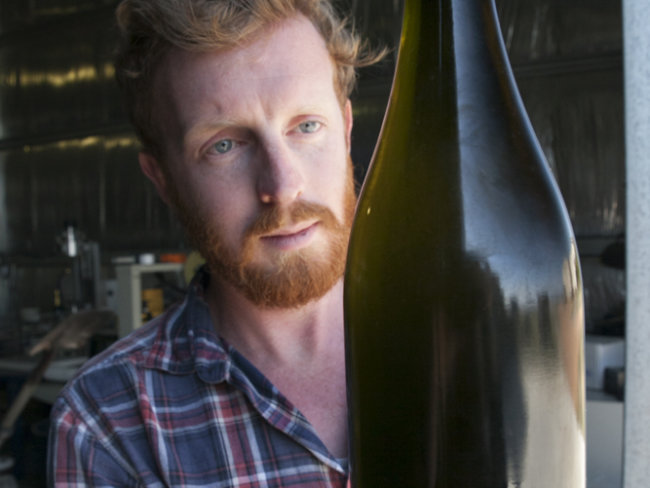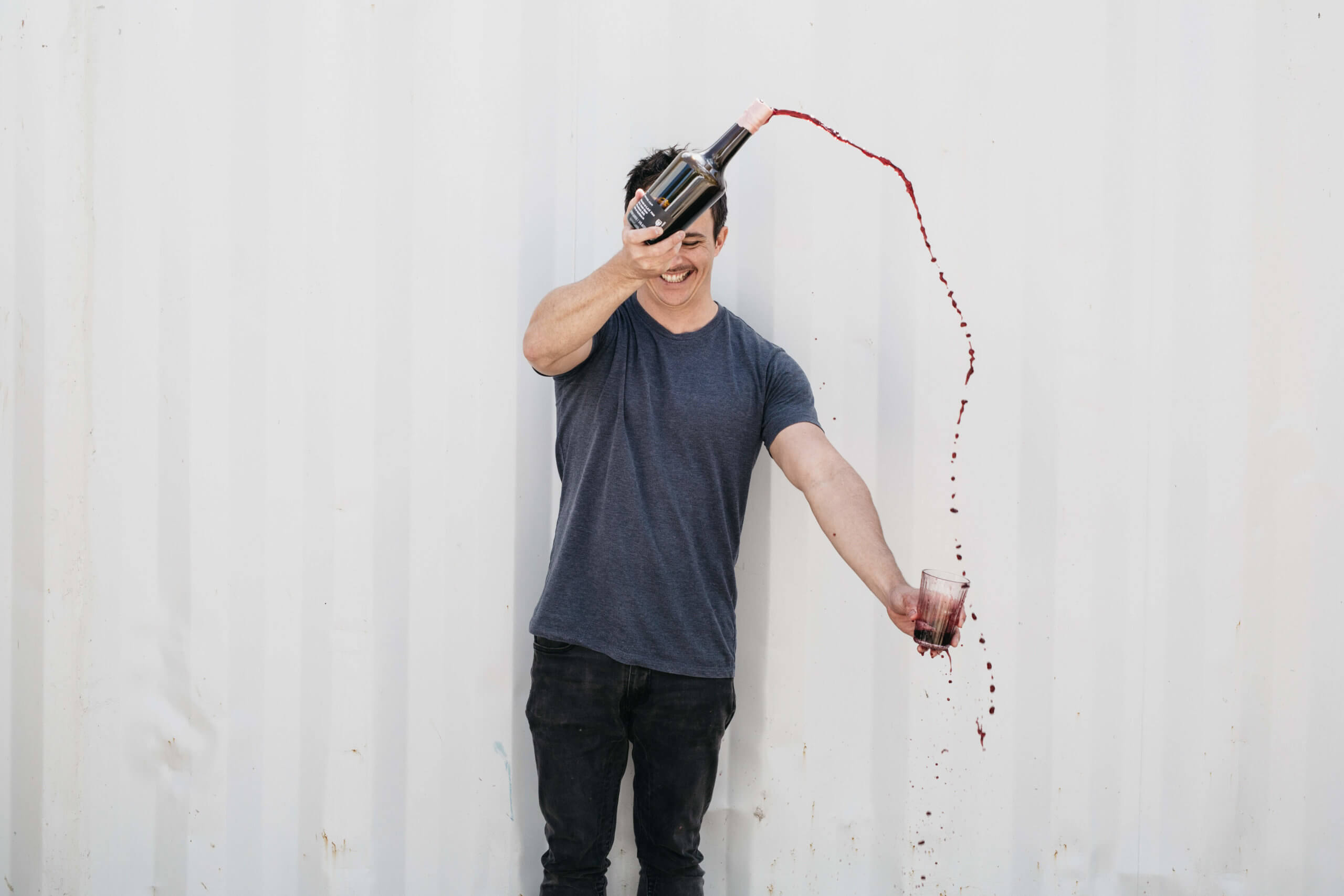With his eponymous label, Tom Shobbrook shook up wine in this country in the nicest possible way, but he certainly shook it up good. As a natural pioneer, he’s never been one to jam dogma down anyone’s throat, instead he’d just look you straight at you with his smiling blue eyes and tell you exactly what he thought. And he’d listen and take on board what you thought, too. Working with extended skin contact on white varieties, super-early picking for reds and a philosophy of nothing added and nothing taken away, the Shobbrook wines became the cornerstone of natural wine in this country. Shobbrook was a Young Gun finalist in 2014.
Tom Shobbrook, in league with Anton van Klopper (Lucy Margaux), James Erskine (Jauma) and the sadly departed Sam Hughes, is one of the pioneers of natural wine in this country, cheerfully shattering norms since 2007, though it was in 2010 when they formed Natural Selection Theory that things officially took off.
Shobbrook’s family had planted a vineyard in Seppeltsfield in 1998, and they produced a little shiraz in the early years. Unlabelled stuff, a barrel or two, for the consumption of family and friends. While those vines were picking up some maturity to become a commercial enterprise supplying grapes to others, Shobbrook spent many years working overseas, with an extended stay at organic Chianti star Riecine, working with long-term winemaker Sean O’Callaghan.
Returning to Australia in 2007, Shobbrook started making a little wine under his own label, which is the same year Van Klopper started Lucy Margaux, making Adelaide Hills pinots from different sites. Around this time, Shobbrook and Van Klopper also started to make some of their legendary road trips to sell their wares, sometimes with Hughes and Erskine, sometimes not.
They’d drive between Sydney, Melbourne and Adelaide in Shobbrook’s old Land Rover and drop into venues to talk wine. Well, wine would feature, but those conversations would just as readily be philosophical, cultural, nigh on spiritual chats. Stopping along the way, they’d forage for wild foods and seaweed, go fishing and then cook for people when they landed in the cities. Few appointments were made, and a drop-in to show some wine to a sommelier could as easily happen at 11 pm as it could at 3 pm. Then they’d bundle into the car and drive to the next city overnight, or sleep in the car, or a park…
Those trips were a bit of a reaction to what was a very staid industry at the time, a wine landscape where every wine of genuine character was outnumbered tenfold by the bland and the commercial, and where selling wine was largely done by men in slacks and check shirts. But Shobbrook’s approach wasn’t one of violent revolt, or an act of opposition. It just wasn’t for him. His aim was to express what wine meant to him, that it was a part expression of a holistic view – an approach to life.
In league with Van Klopper, Shobbrook started by ‘kidnapping’ wine buyers in Adelaide and taking them for a spin around the block, feeding them, splashing wine in jam jars and conveying a spirit. From that, the road trips developed. It was iconoclastic stuff, and it was both intoxicating and charming. They first met Hughes at Vaucluse Cellars on one of those early trips, and he began to help them question winemaking conventions. On one particular night over a flight of Radikon, Natural Selection Theory was born, as was their Egg Project – a boundary pushing exercise that saw a 2010 semillon raised in eggs encased in different minerals and played constant and distinctly varied music.
Over the years, Shobbrook worked on the family property, successfully converting it to biodynamics and making it an enviable source of fruit. It’s where is own label was centred, too, though he also sourced across the Barossa and Adelaide Hills. His ‘Giallo’ became an early success story for skin-contact whites, while somewhat later his super-early pick of shiraz launched a wine synonymous with Shobbrook, the crunchy and bright ‘Poolside’. Around this, his syrah from the family vineyard always flew the flag for longer lived wines, and the less-experimental blend of syrah and mourvèdre, which launched his label, ‘Tommy Ruff’ has remained a constant.
What has changed, however, is Tom’s family’s decision to sell the farm. That saw a move to the relative cool of the Flaxman Valley (Barossa) at about 540 metres, where initial planting of two hectares is planned to grow to five hectares over times. He will continue to source fruit from the Adelaide Hills and the Barossa until his vines come on line. As of 2017, Shobbrook has eliminated the use of sulphur in the winery, not just in the finished wines, but for cleaning barrels, too – no mean feat. And he hasn’t used sulphur or copper as viticultural aids since 2011.





